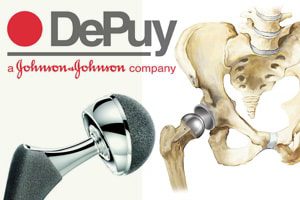
The DePuy Orthopaedics division of Johnson & Johnson and the court-appointed committee of lawyers representing ASR Hip System plaintiffs yesterday announced a proposed a settlement of nearly $2.5 billion to compensate eligible ASR Hip System patients in the United States. Under the agreement, patients are eligible if they had surgery to replace an ASR hip […]
 The DePuy Orthopaedics division of Johnson & Johnson and the court-appointed committee of lawyers representing ASR Hip System plaintiffs yesterday announced a proposed a settlement of nearly $2.5 billion to compensate eligible ASR Hip System patients in the United States. Under the agreement, patients are eligible if they had surgery to replace an ASR hip by August 31, 2013.
The DePuy Orthopaedics division of Johnson & Johnson and the court-appointed committee of lawyers representing ASR Hip System plaintiffs yesterday announced a proposed a settlement of nearly $2.5 billion to compensate eligible ASR Hip System patients in the United States. Under the agreement, patients are eligible if they had surgery to replace an ASR hip by August 31, 2013.
Based on an estimate of 8,000 patients participating in the program, the U.S. settlement is valued at approximately $2.5 billion, according to a Johnson & Johnson news release. The company projects that the majority of the settlement payments will be made during 2014. The cost of care for patients who have revision surgery after August 31, 2013 could raise the settlement to over $3 billion.
The proposed settlement was submitted on Tuesday to a federal judge in Toledo, Ohio. The New York Times reports that it must receive the support of 94 percent of eligible claimants to go forward. That goal may not be reached because some patients may decide to pursue individual lawsuits. The compensation amount will vary and is based on such factors as length of time the patient had the implant; age, weight, smoking, and any “extraordinary injuries” related to the implant.
The Articular Surface Replacement (ASR) hip, which DePuy recalled in mid-2010, is one of the most-assailed medical devices in recent decades, according to the Times. A 2011 DePuy internal document estimated that the device would fail within five years in 40 percent of patients who received it. Traditional artificial hips made of a combination of metal and plastic parts typically last 15 years or more. Before the recall, 93,000 DePuy ASR hips had been implanted, about one-third of these in the U.S.
The ASR has a metal ball and metal cup, and it sheds metallic debris as it wears, generating particles that have caused bone and tissue damage and crippling injuries in some recipients. Revision surgery to replace a failed hip is riskier and more complicated than the original surgery because of the damage. Some patients suffer lasting pain and injuries not reversible through revision surgery.


